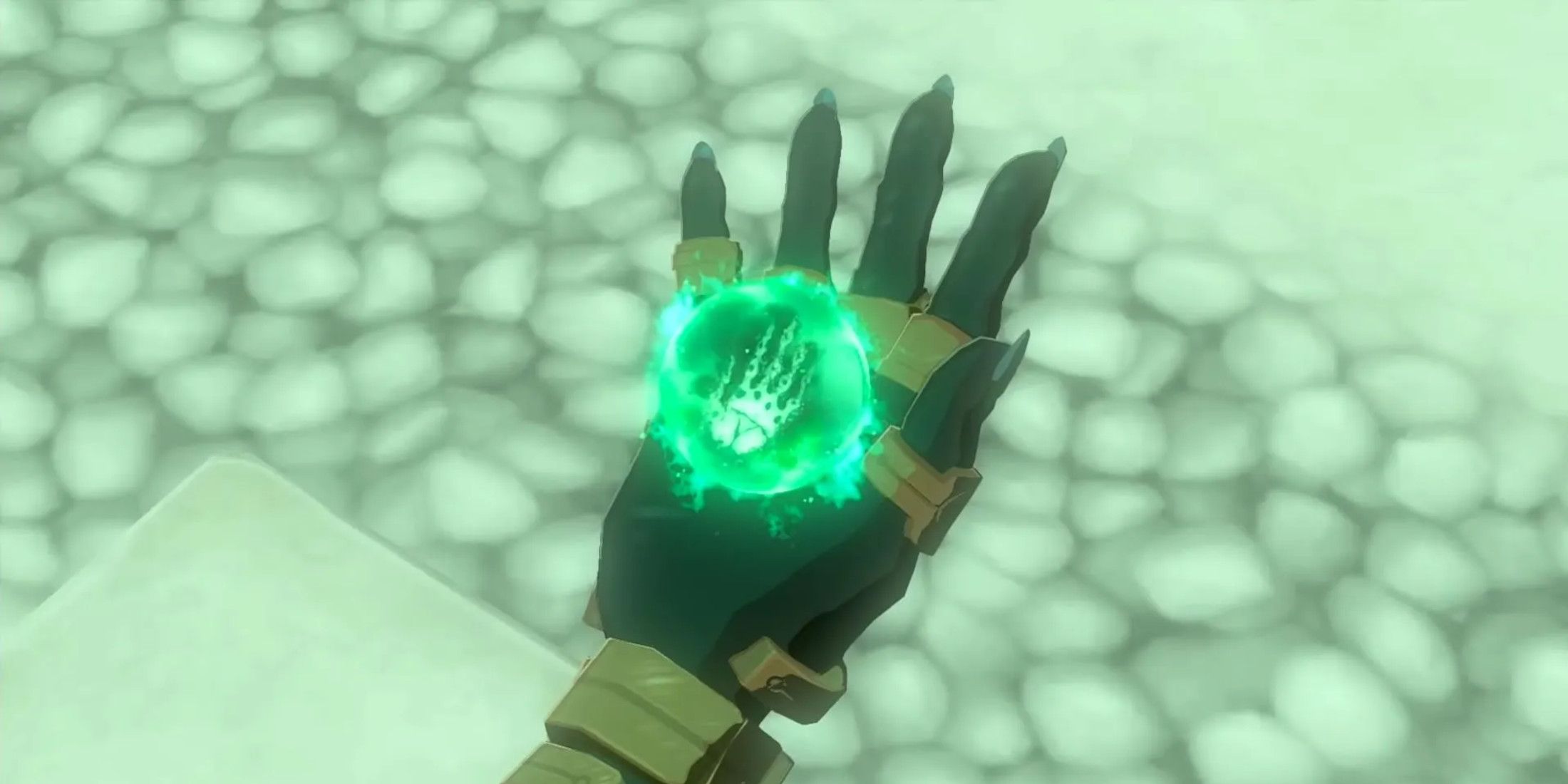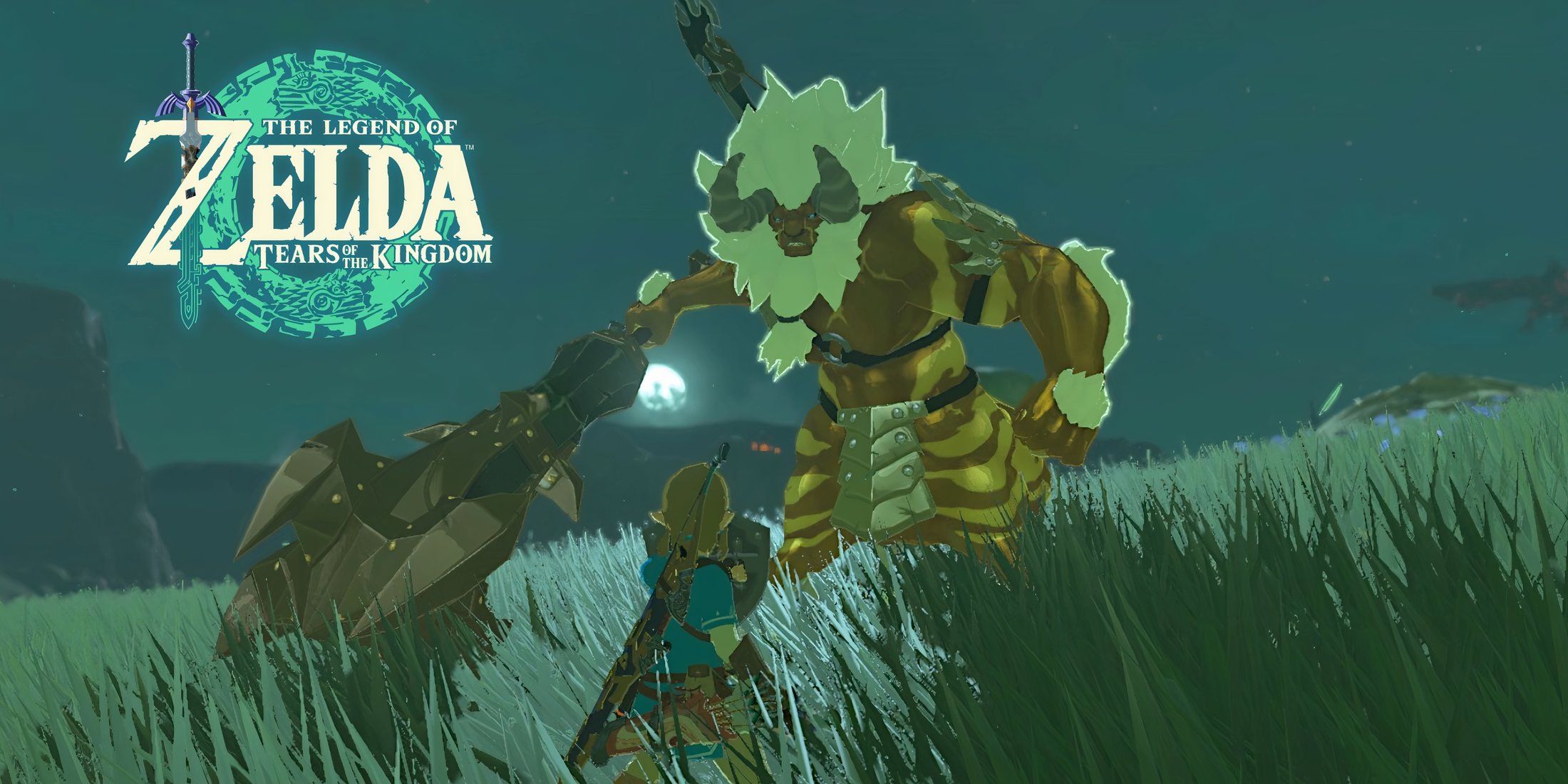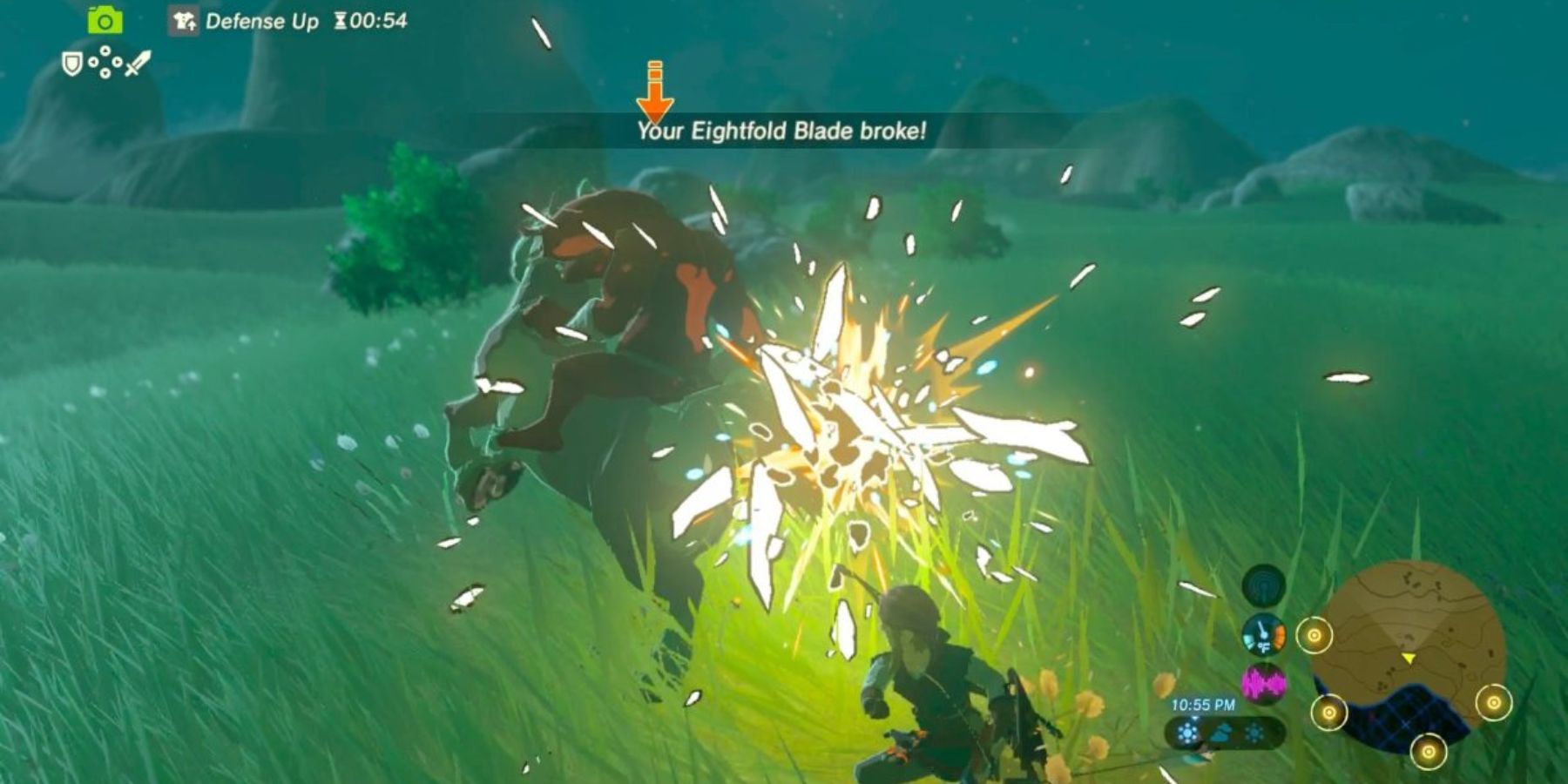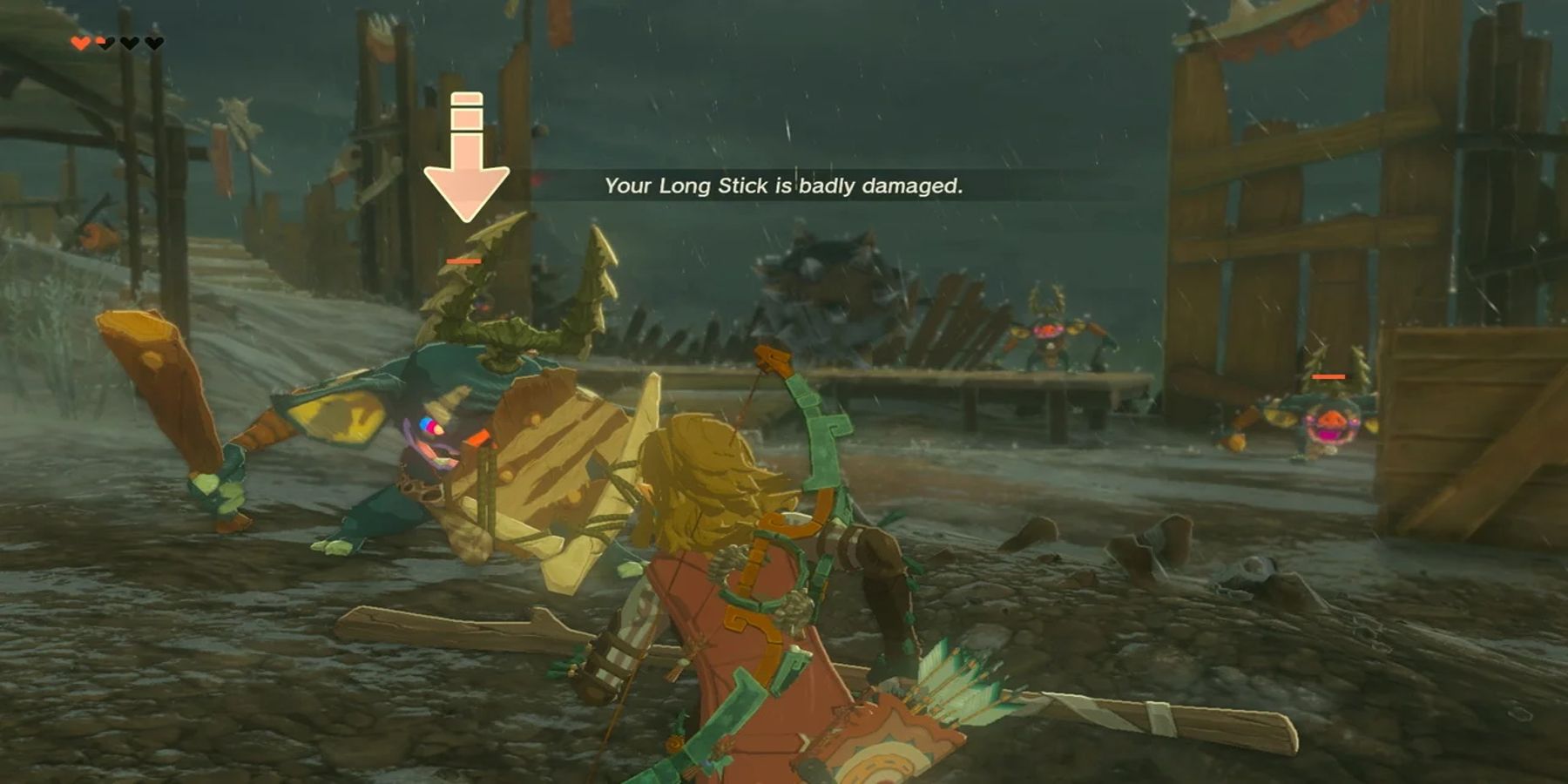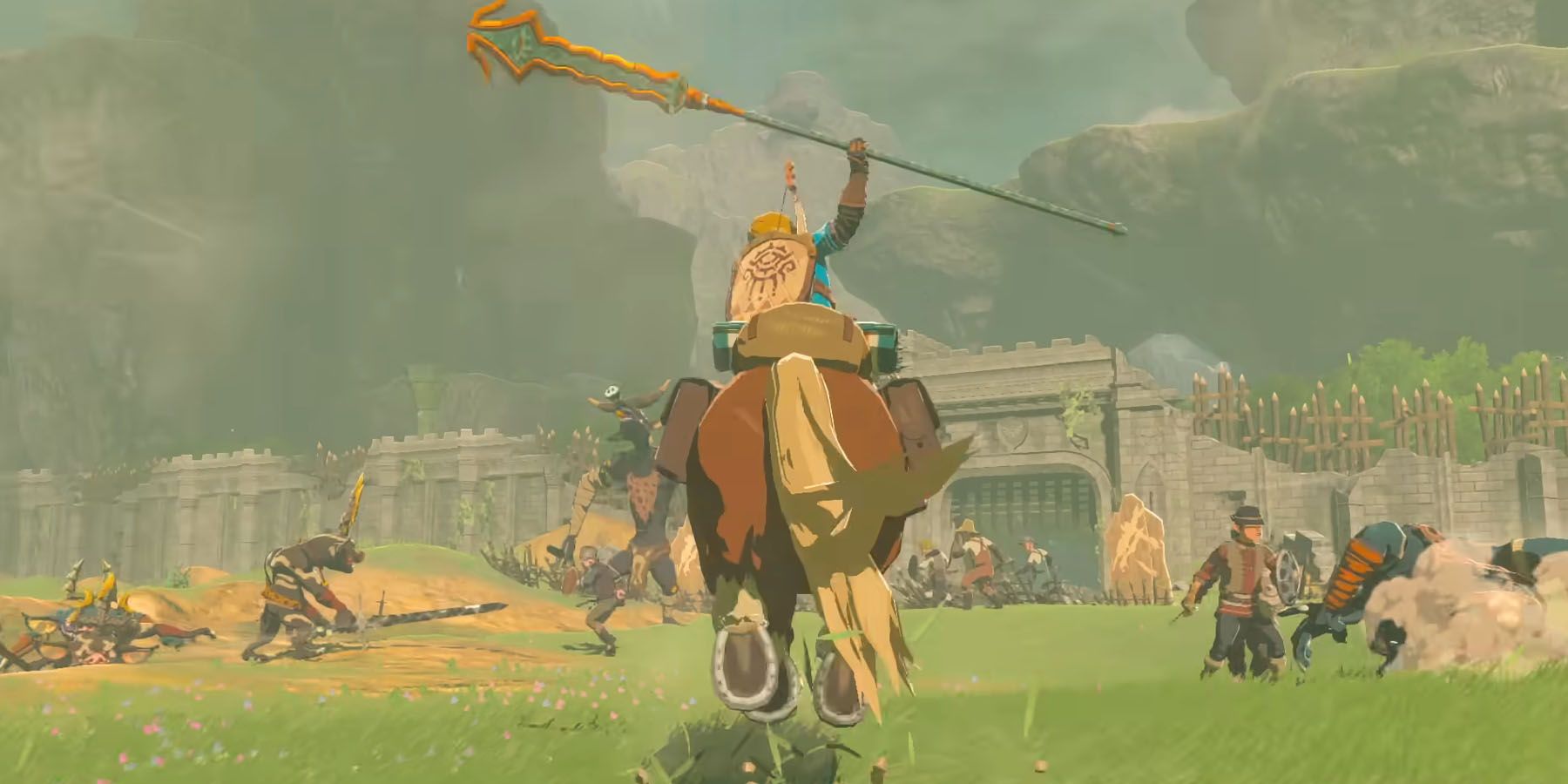Though it still carries a little controversy, The Legend of Zelda: Tears of the Kingdom kept the durability mechanics introduced in The Legend of Zelda: Breath of the Wild, but it failed to follow through on a lesson it should have learned as its sequel. As part of the overhaul of Zelda's traditional gameplay, Breath of the Wild caused a stir when it was revealed that Link's weapons, shields, and bows would all break after prolonged use. While this did stray from the series norm of Link's usual equipment, it was balanced with Tears of the Kingdom's multitude of weapons.
Even as far back as when it was first announced as Breath of the Wild's sequel, questions about whether the same durability mechanics would make their way into Tears of the Kingdom were raised. But while certain trailers inadvertently confirmed durability would be returning, Tears of the Kingdom has since gone on to reshape how players can approach their gear thanks to Link's Fuse ability which created all sorts of powerful and useful equipment combinations. However, despite improving its approach to weapons and shields in some areas, Tears of the Kingdom still missed one durability change that could have significantly improved the player's experience.
Both Zelda: Breath of the Wild And Zelda: Tears of the Kingdom Need A Durability Meter
The durability mechanic in both Breath of the Wild and Tears of the Kingdom effectively serves as a means of motivating the player to engage with enemies and explore the world. Not only does this ensure the player continuously replenishes their stock of weapons, shields, and bows, but it also helps scale the player's inventory with stronger, more durable gear. Tears of the Kingdom and its Fuse ability also help players coordinate what sort of gear they carry with them, such as ensuring they have a hammer-like weapon for mining or a rocket-fused shield to get some quick and easy height.
However, since every weapon, shield, and bow eventually break, durability was something players had to contend with, left with only in-game prompts and a flashing inventory letting them know it might be time to start looking for a replacement. Though not the first time durability was added to a Zelda game, Breath of the Wild was arguably the first to make it a core mechanic, so any shortfalls in its implementation could be forgiven. Yet despite giving the player a stamina meter and having the opportunity to learn from its predecessor, The Legend of Zelda: Tears of the Kingdom still failed to add a durability meter.
Games After Zelda: Tears of the Kingdom Can Do Better
While a durability meter could have benefited Breath of the Wild, it should have been an essential addition to Tears of the Kingdom, especially when factoring in its new Fuse ability. As demonstrated by players outlining how best to maximize Tears of the Kingdom's weapon damage with certain fuse combinations and a final break bonus, there's a clear need for players to be able to better see how durable something is. In doing so, players can make sure not to waste rare or valuable resources like gemstones for fused weapons, and it can help players strategize which weapons to use or discard based on their remaining durability.
If the rumors about another sequel following Tears of the Kingdom are true, then it's likely that most of the core mechanics from it and Breath of the Wild will be reused. Even if the next Zelda game isn't built from the same engine as the pair but retains some of their mechanics, then a durability meter cannot be overlooked for a third time. Just as other Zelda games have given players a magic meter and a stamina wheel, a more effective way of conveying a weapon's durability needs to become another design staple.
The Legend of Zelda: Tears of the Kingdom is available now on Nintendo Switch.


